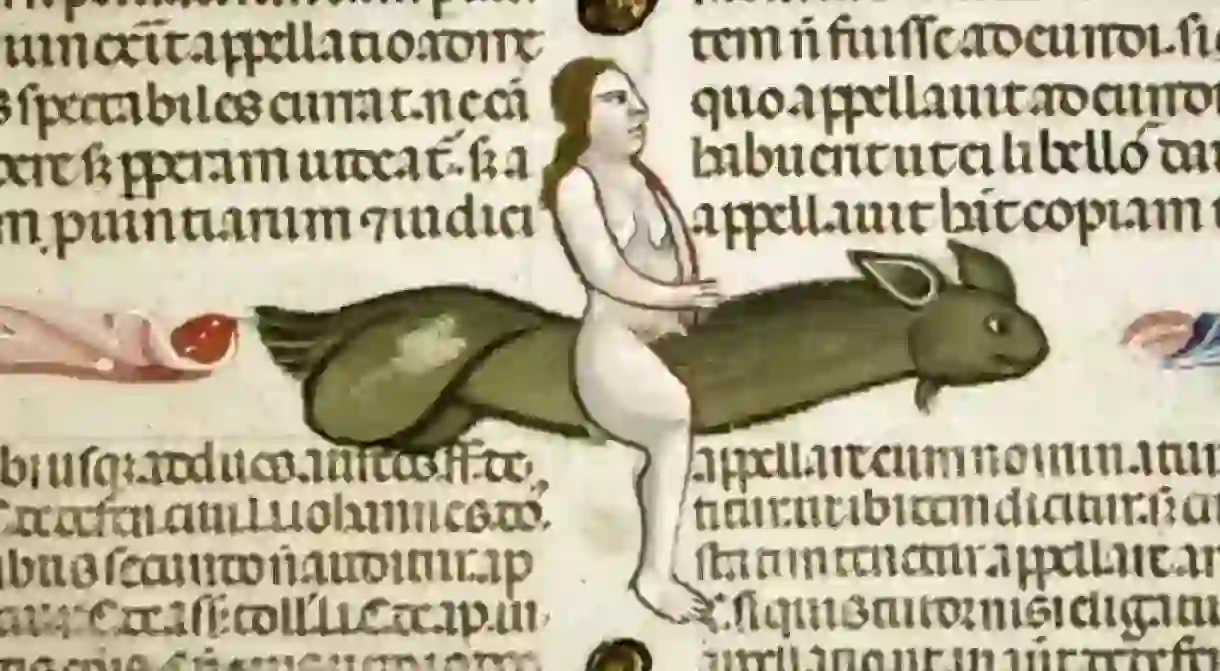There Are Hilarious Secret Penises in Your Favourite Art

The penis. Love it or hate it, it’s everywhere – including in these famous artworks from throughout the ages.
Massa Marittima

From afar, this might look like your perfect picnic spot, but take a closer peek and you’ll see some strange leaves hanging from the branches. The Massa Marittima mural in Tuscany, lovingly known as ‘the penis tree’, was painted circa 1265. The painting itself is actually a masterful piece of political propaganda, commissioned by the Guelph religious faction of Central Italy against the Ghibellines of Northern Italy, implying the village of Massa Marittima would experience sexual perversion and witchcraft should the Ghibellines be given power.
Flying Phallus from Pompeii

Fancy dangling this to up your home decor game?
Thomas Gainsborough’s Mr. and Mrs. Andrews

Ok, so there are not one, but TWO secret penises in this not-so-simple domestic scene by 18th-century English painter Thomas Gainsborough. First off, check out that dangling bag on Mr. Andrews’ right hip. Secondly, it’s impossible to tell without being much closer, but the piece of paper in Mrs. Andrews’ lap is a doodle of a penis too!
John Everett Millais, Isabella

While this Pre-Raphaelite supper by Millais might appear to be quite prim and proper, take a closer look at the shadow stretching from the crotch area of the man with the white tights. Yep… (No further words needed.)
Johannes Vermeer, The Music Lesson

Not quite as obvious as the other ding-a-lings mentioned on this list, this Vermeer painting is disturbingly erotic. The young woman is playing a ‘virginal’, which, as the name would suggest, is an instrument associated with purity. A close look in the mirror, however, will illustrate that the music student is gazing at her male teacher, rather than at her fingers. The pitcher of wine suggests an aphrodisiac and, lastly, the cello on the floor, whilst not an actual penis, is widely accepted as a giant phallic symbol. Case closed.
Decretum Gratiani

May we introduce you to the original Mother of Dragons! There is no denying this creature from the 13th-century Decretum Gratiani manuscript with commentary by Bartolomeo de Brescia looks more like a penis than anything else.
Roman de la Rose

Thought you’d seen the last of the penis tree? Think again – because here are some nuns just casually picking from one!
Michelangelo, David

Ok, so this isn’t as much a case of a secret penis as much as one of, wait for it, secret shrinkage. It has often been speculated why Michelangelo, who clearly sculpted the practically perfect man in his iconic David, would choose to make Little David quite so little. Well, a 2005 study actually shows that every anatomical detail of the little fella is consistent with what happens when a man is affected by fear, tension and aggression, which makes sense since David is about to face Goliath. This penis isn’t tiny, it’s just hiding.
Salvador Dali, L’Enigme de Guillaume Tell

Moving on to something a bit more contemporary, welcome to this painting by Salvador Dali featuring a very large third leg.
Louise Bourgeois
https://www.instagram.com/p/BbZwjBlA1x5/?tagged=louisebourgeois
Contemporary art powerhouse Louise Bourgeois created this sculptural work full of phallic symbols – an excellent reminder that men don’t have dibs on penis art.













